Human Interest
Silk Road notes 5: ships
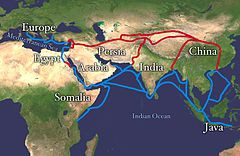
Navigation is one of the most important of the technologies of the Silk Road. It is what made parts of the Silk Road passable. Muslims try to claim credit for that, too. And some of the claims are patently absurd.
Navigating the Silk Road, and Muslim claims about it
EXHIBIT SIGN:
SAILING
When sailing the Indian Ocean, seamen took advantage of predictable monsoon winds, which blew from the northeast in winter and from the southeast in summer. Arab ships typically sailed down the Persian Gulf in September or October. With good timing, they could catch the gentle southwestern monsoon through the South China Sea in April or May.
WHAT WASN’T SAID:
- That many people sailed the Indian Ocean, and other cultures’ accomplishments were ignored.
- That the history of navigation in the Indian Ocean goes back about 4,000 years ago, during the days of Pharaohs, when the Egyptian seafarers sailed to the country of Punt, the coast of Somalia or the Mozambique coast of gold and incense; and the Sumerians and Jews who were traversing the Persian Gulf.
- Maritime links between the ancient city of Lothal in India and Mesopotamia are known to have existed, and other traders in the Western Indian Ocean were the Phoenicians, Greeks, and Romans.
FACTS:
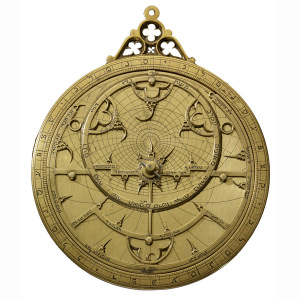 The results of human genetic and archaeological research provide us with indirect evidence for the early use of water transport around the Indian Ocean, showing they began to move out of Africa more than 100,000 years ago…a distinct stream of modern humans crossed from the Horn of Africa to the Arabian peninsula and then spread around the rim of the Indian Ocean, eventually reaching Australia, perhaps by 80,000 BP (before the present).
The results of human genetic and archaeological research provide us with indirect evidence for the early use of water transport around the Indian Ocean, showing they began to move out of Africa more than 100,000 years ago…a distinct stream of modern humans crossed from the Horn of Africa to the Arabian peninsula and then spread around the rim of the Indian Ocean, eventually reaching Australia, perhaps by 80,000 BP (before the present).
EXHIBIT SIGNS:
STAR FINDER
Islamic astronomers used a tool called an astrolabe as a guide to the sky. By measuring the position of the sun and stars, they could precisely tell the time of day or night, or predict the moment that the sun would rise in the morning.
To develop the astrolabe, Islamic scholars took a Greek idea, refined it and added many new features to make it more versatile. According to one early astrolabe expert, this all-purpose astronomical instrument had 1,000 uses in all.
WHAT TIME IS IT?
Can you tell the time by the stars? Muslim astronomers could, using a model of the heavens, called an astrolabe. Try it yourself. Imagine today is November 14, AD1000, and you are in Baghdad. Ahead of you is the eastern night sky.
The most useful device in an Islamic astronomer’s tool kit was the astrolabe, a form of calculator that helped chart space and time. With an astrolabe, a scholar could determine the position of the stars, find latitude, and predict the time of sunrise and sunset, when mosques would give the call to prayer.
Note: the word astrolabe appears in that sign in Hebrew, not Arabic, script.
WHAT WASN’T SAID:
That the Jewish Talmud teaches that the earth is round and the astrolabe is a Jewish invention.
FACTS:
- Judaic savants were largely responsible for the invention and development of the instruments and astronomical tables that thereafter facilitated world-girdling sea voyages. The Zohar (Leviticus 1.3) was more specific about the earth’s rotating on its axis like a ball; Maimonides and other medieval Judaic scientists subscribed to that concept.
- Intercontinental trade was pioneered by Persian Jews who pioneered the “Silk Route” to the heart of China in the 5th c. BCE. Augustus, first Roman emperor, is said to have commissioned “the first travel guide” from Isidore of Charax (a town on the Euphrates River estuary on the Persian Gulf). Centuries later, while the Europeans were still deep in the Dark Ages, Persian Rhadanite (Medieval Jewish merchants) scholar/travelers pioneered land and sea trade routes to the Far East.
- “These merchants speak Arabic, Persian, Roman, Frankish, Spanish, and Slavonic,” wrote Ibn Khurdadhih in the ninth century CE, “They travel from East to West and from West to East by land as well as by sea.” They also spoke Hebrew and Aramaic.
- Astronomical tables were similarly compiled by Joseph ben Wakkar at Toledo in 1396, and in Aragon by various Judaic specialists. Other significant calculations were made by Emanuel ben Jacob (aka Bonfils de Tarascon).The tables were used along with an astrolabe, an instrument introduced into the Arab-speaking world by a remarkable Jewish genius, Mashala of Mosul, “the phoenix of his age.” The use of the astrolabe, an instrument for taking the altitude of heavenly bodies, in conjunction with the astronomical tables, helped determine a ship’s position at sea.
EXHIBIT SIGN:
Similar to an astrolabe, a sine quadrant was used by Islamic astronomers to measure points in the sky. Holding the quadrant in one hand at a particular angle, the astronomer would make calculations based on where the bronze weight suspended by a cord hung down the face of the quadrant. This tool is called a quadrant because it represents one quarter of a circle. It was first developed in the 800s in Baghdad.
WHAT WASN’T SAID:
- That the advanced model designed by Rabbi Joseph bn Makhir was used by Copernicus and Kepler.
- That the most notable cartographers were found among the Jews, and the most advanced cartographer was a Jew who was forced to convert to Christianity. Christopher Columbus’s cartographers and other companions may have been conversos.
FACTS:
[ezadsense midpost]
- The quadrant, another device important for navigation on the high seas, measured the right ascension (angle from the horizon) of the sun and stars. An advanced model, designed by Rabbi Joseph bn Makhir, became known as the Quadrant Judaicus. Rabbi Makhir compiled the calendar used by Dante, and was quoted as an authority, long after his passing, by Copernicus and Kepler.
- Rabbi, Levi ben Gershom, in southern France, devoted 136 chapters to astronomy in his major work, The Wars of the Lord; it included an improved quadrant, Jacob’s Staff, that Renaissance explorers depended on for determining latitude and local hour.
- The most notable cartographers could be found among the Jews. Geographic intelligence was a boon of Judaic dispersion into the Diaspora. Information gleaned by Judaic travelers, deposited with compatriots along their itinerary, was transmitted to other passing Judaic travelers. Geographic intelligence was likewise passed along through correspondence delivered by these travelers from region to region.
- Majorca, midway between Africa and Europe, became a beehive of Judaic mapmaking; Majorcans were unrivaled seafarers and Jews became their cartographers par excellence. A Jew, Jehuda, forced to convert to Christianity, produced the most famous mapamundi (world map) of the Atlantic coasts and mysterious oceans beyond. He became the first director of the famous nautical observatory in Portugal. Another convert and cartographer authored another famous mapamundi, used by Amerigo Vespucci.
- Abraham Zacuto (1452-1515) was the most reputable astronomer of the day (University of Salamanca) and possible voyages of Columbus, and instructed Columbus on the use of the perfected astrolabe, which also became the standard in subsequent voyages by all colonialist adventurers, including the ships of Vasco de Gama.
EXHIBIT SIGNS:
A TIGHT SHIP
Could a boat made without nails be strong enough to withstand the monsoon winds of the Indian Ocean? For hundreds of years merchants of the Middle East sailed on such ships, made of durable teak or coconut wood imported from India or Indonesia. Shipbuilders stitched the planks together with coir, a cord made by twisting fibers of coconut husks. Then they sealed the seams with resin or pitch mixed with whale oil.
NEWCOMER
In the late 1200s, Venetian merchant Marco Polo journeyed to China along the Silk road, then returned west by ship, as shown in this picture of his visit to the Persian port of Hormuz. But Marco Polo was the exception. Few Europeans sailed the Indian Ocean until around 1500, when Portuguese explorer Vasco de Gama rounded the southern tip of Africa for the first time.
WHAT WASN’T SAID:
- That Polynesians were the finest navigators of the time.
- Vasco de Gama owed his successful voyages and fame to the astrolabe and the mapamundi.
- That Marco Polo was the most famous, but not the first, European to reach China. Others had preceded him and were living under Mongol rule, some in servitude.
EXHIBIT SIGN:
PATHFINDER
To track progress when traveling north or south, Arab navigators used a kamal, a simple device made up of a knotted string running through a hole in the middle of a small wooden card. Each knot corresponded to the latitude of a well-known port.
A sailor held the string in his teeth by the final knot and aligned the bottom of the card with the horizon. Then he slid the card along the string until the top aligned with the pole star. The latitude of the ship could be gauged by the nearest knot.
WHAT WASN’T SAID:
That the Kemal was not the first or the only type of navigational device in use; sailors were quite ingenious:
- The first seafarers kept in sight of land: follow the coast, lining up the landmarks.
- The Greeks learned to navigate from one island to the next by following clouds, which form over land, or odors that carry far out to sea.
- The Phoenicians looked to the heavens – the sun’s movement across a cloudless Mediterranean sky gave direction and quarter, meaning east and west, Asia and Europe. At night, they steered by the stars, finding fixed “heights” by measuring fingers laid horizontally one over the other.
- Ionian sailors navigated by the Little Bear constellation 600 BC.
- Norsemen watched the summer stars, and the behavior of birds.
- Eskimos studied the snow and Polynesians, whose navigational feats arguably have never been surpassed, watched the waves.
- Seafarers of the Marshall Islands built ingenious, elaborate maps of palm twigs and shells, denoting everything from the island to the prevailing direction of the swell.
- Alexandrian astronomer Ptolemy created the first world atlas in 2 AD, plotting latitude and longitude lines; he was preceded by the Greeks, who described trading routes as far east as India.
- By the 10th c., Italian-made portolans supplied detailed directions, distances, depths, coastal description and, by the 13th c., sea maps with scale and bearings began to appear.
- The greatest advance in navigation came with the Chinese compass; the Chinese knew about magnetism as early as the 3rd millennium BC. The first western compass was mentioned in 1187.
- Indian traders rode the northeast monsoon to Africa and the southwest monsoon back to the subcontinent. Polynesians also hitched rides on prevailing winds.
- Phoenicians to the Polynesians measured the height of the sun and stars over the horizon, using the gnomon.
- The Arabians used the Kemal, as described, to determine latitude.
- In the Middle Ages, sailors relied on the astrolabe.
EXHIBIT SIGN:
MODEL OF A SEAGOING DHOW
Sailors from Islamic lands traveled by dhow, a lightweight boat that sat high on the water. Traditional dhows are rigged with a triangular sail supported by a diagonal bar attached to the mast. The Middle Eastern invention, known as a lateen sail, allowed boats to tack, or sail across the wind.
WHAT WASN’T SAID:
That the dhow is the generic name of a number of traditional sailing and trading vessels with more than one mast. Although some historians claim the dhow was invented by Arabs or Indians, the majority give credit to the Chinese, dating back to between 600 BC to 600 AD. Some claim the sambuk dhow may be derived from the Portuguese caravel.
EXHIBIT SIGNS:
ACROSS THE SEAS
In 851, an Arab traveler gave an account of the voyage from the Persian Gulf to Guangzhou, the Chinese part formerly known as Canton. This map shows the route, with its real and imagined wonders described in his words.
THE RISE OF SHIPPING
While caravan merchants of the Silk Road risked their worldly assets transporting goods over mountains and deserts, other traders placed their bets on the sea. To reach China, ships sailing from Baghdad had to travel some 6,000 miles (9,600 kilometers). The voyage took about six months – yet this was considerably faster than overland travel, which could take as long as a year. Despite the peril of pirate attacks and shattering storms, sea trade expanded and eventually overshadowed the caravan trade.
WHAT WASN’T SAID:
- That the risk to caravan merchants of the Silk Road might have been the perils imposed by Muslims, known for their attacks, seizing ships, kidnapping, enslavement, and plunder for booty.
- The First Barbary War (1801–1805), also known as the Tripolitan War or the Barbary Coast War, was the first of two wars fought between the United States and the Northwest African Berber Muslim states known collectively as the Barbary States. They were fought because U.S. President Thomas Jefferson refused to pay the high tributes demanded by the Barbary States and because they were seizing American merchant ships and enslaving the crews for high ransoms. It was the first declared war that the United States fought on foreign land and seas.
- The Tripoli Monument, the oldest military monument in the U.S., honors the heroes of the First Barbary War.
EXHIBIT SIGN:
SINDBAD SAILS AGAIN
Early Arab stories tell of a merchant named Sindbad who sailed the trade routes between Baghdad and China and had extraordinary adventures along the way. In 1980 British explorer Timothy Severin set out to retrace the voyages of Sindbad in a traditional Arab dhow.
The boat on display here is a scale model of the Sohar, the ship Severin sailed. The sohar was built of planks of aini wood from the tropical forests of India and sewn together with coconut cord from the Laccadive Islands. Setting sail in late autumn, it completed the voyage from Muscart, Oman, to Guangzhow, China in about seven months, just in time to escape the summer typhoons.
WHAT WASN’T SAID:
That Timothy Severin reproduced a voyage that never took place.
(To be continued)
Earlier Silk Road Notes articles:
- Silk Road notes 4: learning
- Silk Road notes 3: glass
- Silk Road notes 2: trade
- Silk Road notes 1: silk
[ezadsense leadout]
[subscribe2]
Author of “Confronting the Deception,” Tabitha Korol began her political career after 9/11, with letters to the editor and essays, developing a readership and earning two writing awards along the way. Her work appeared on Academia.edu, Christian Action Network, Conservative News and Views, Dr. Rich Swier, iPatriot, Liberty News & Views, LobbyistsforCitizens.com; Published Reporter, Renew America, Ted Belman, The Noisy Room, Trevor Loudon’s New Zeal, Virginia Christian Alliance, WebCommentary, and others.
-

 Civilization2 days ago
Civilization2 days agoDC Pipe Bomb Arrest Raises Questions About Christopher’s Wray’s FBI
-

 Civilization3 days ago
Civilization3 days agoThe Legal Logic Behind U.S. Operations Against Narco-Terrorist Networks
-

 Guest Columns4 days ago
Guest Columns4 days agoCongressional Leaders See Far Higher Stock Returns Than Peers
-

 Civilization5 days ago
Civilization5 days agoHow Trump Changed America
-

 Executive4 days ago
Executive4 days agoNewsom’s ‘National Model’ for Homeless Wracked by Fraud
-

 Executive3 days ago
Executive3 days agoWhen You’re in a Hole, Stop Digging
-

 Education2 days ago
Education2 days agoWaste of the Day: Taxpayers Subsidize Football Coach Severance
-

 Civilization1 day ago
Civilization1 day agoPence Calls on Trump To Fire RFK Jr Over Abortion Drug





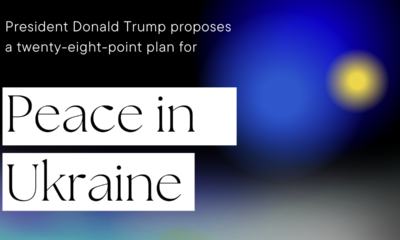



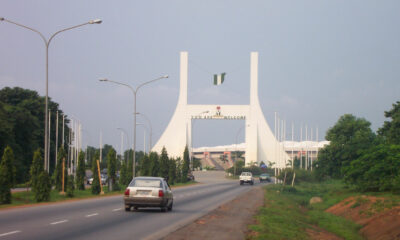

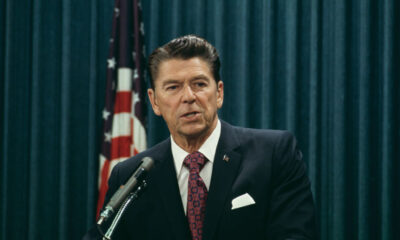



[…] Silk Road notes 5: ships […]
[…] Silk Road notes 5: ships […]
[…] Silk Road notes 5: ships […]
[…] Silk Road notes 5: ships […]
[…] Ships […]